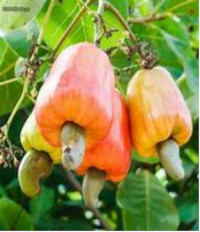Antimicrobial Evaluation of Cardol and Cardol-Metal Complexes from the Nut Shell Liquid of Anacardium occidentale http://www.doi.org/10.26538/tjnpr/v7i7.36
Main Article Content
Abstract
Cardol, as one of the major constituents of Cashew Nut Shell Liquids has received little attention
in terms of modification and applications. The presence of two hydroxyl groups and an alkyl side
chain of 15 carbon length make it a natural compound of interest. The present study is aimed at
modification and complexation of cardol, and the antimicrobial investigations of the compound
as well as its analogue and complexes. Isolated cardol from cashew nut shell liquid was nitrated,
and the compounds were used in the synthesis of metal (II) complexes of Copper, Cobalt, and
Zinc. The compounds and complexes were characterised by melting points, UV-Vis
spectrophotometry, Fourier Transform Infrared (FTIR) spectrophotometry, and Nuclear Magnetic
resonance (NMR) spectroscopy. The antibacterial and antifungal evaluations of both the
compounds and complexes were tested in vitro against some selected bacteria and fungi. From the
results, Copper complex of nitrocardol produced significantly higher antibacterial zone of
inhibition (11.5 ± 2.1 mm) against Pedobacter mendelii than tetracycline while Copper complex
of cardol showed significantly higher antifungal activity (13.5 ± 2.1 mm) against Rhizopus
stolonifar than clotrimazole (10.0 ± 0.0 mm). It was generally observed that modification and
metal complexation enhanced the antimicrobial activity of cardol. Further studies on these
complexes could be done to enhance their potencies and potentials for use as antibacterial and
antifungal agents.
Keywords: Anacardium occidentale, Cardol, Antifungal, Antibacterial, Complex
Downloads
Article Details

This work is licensed under a Creative Commons Attribution-NonCommercial-NoDerivatives 4.0 International License.
References
Shakeri A, Panahi Y, Johnston TP, Sahebkar A. Biological properties of metal complexes of curcumin. Biofactors. 2019; 45(3):304-317.
Hossain MS, Roy PK, Ali R, Zakaria CM, Kudrat-E-Zahan, M. Selected Pharmacological Applications of 1st Row Transition Metal Complexes: A review. Clin Med Res. 2017;
(6):177-191.
Joseph J, Nagashri K, Rani GAB. Synthesis, characterization, and antimicrobial activities of copper complexes derived from 4- aminoantipyrine derivatives. J
Saudi Chem Soc. 2013; 17(3):285–294.
Mota JPF, Ribeiro VGP, da Silva FLF, Costa Jr. AE, Oliveira DR, Kotzebue LRV, Mele G, Lomonaco D, Mazzetto SE. Developing eco-friendly methods for purification of
compounds derived from hydrogenated cardanol. Sep Sci. Technol. 2016; 51(14):2473-2483.
Mazzetto SE, Lomonaco D, Mele G. Cashew nut oil: opportunities and challenges in the context of development and industrial sustainability Cashew. Quim
Nova. 2009; 32(3):732-741.
Lomonaco D, Santiago GMP, Ferreira YS, Arriaga AMC, Mazzetto SE, Mele G, Vasapollo G. Study of technical CNSL and its main components as new green larvicides. Green
Chem. 2009; 11(1):31-33.
Almeida MO, Bezerra TT, Lima NMA, Sousa AF, Trevisan MTS, Ribeiro VGP, Lomonaco D, Mazzetto SE. CardolDerived Organophosphorothioates as Inhibitors of
Acetylcholinesterase for Dengue Vector Control. J Braz Chem Soc. 2019; 30(12):2634-2641.
Gaál A, Orgován G, Mihucz VG, Pape I, Ingerle D, Streli C. Szoboszlai, NJ. Metal Transport Capabilities of Anticancer Copper Chelators. Trace Elem Med Biol. 2018; 47(1):79–88.
Ali M, Bitu NA, Hossain S, Hossen F, Asraf A, Haque MM, Farooque A, Zahan KE. Synthesis, Structural Characterizations And Biological Properties Of Cd(II) And
Zr(IV) Peroxo Complexes Containing Schiff Base Derived From Cinnamaldehyde and O-Aminobenzoic Acid, New Mater Compds Appl. 2020; 4(3):173-181.
Oke DG, Faboro EO, Olanrewaju AA, Oyeneyin OE, Lajide L. In vitro Antifungal and In silico Antibacterial Evaluations of Anacardic Acid and its Complexes from Cashew Nut Shell
Oil. Trop J Nat Prod Res. 2022; 6(8):1290-1296.
Wanninger S, Lorenz V, Subhan A, Edelmann FT. Metal complexes of curcumin—synthetic strategies, structures and medicinal applications. Chem Soc Rev. 2015; 44(15):4986–
Maia FJN, Clemente C, da Oliveira TMBF, Lomonaco D, Oliveira, TIS, Almeida MO, de Lima-Neto P, Correia AN, Mazzeto SE. Electrochemical and computational studies of
phenolic antioxidants from cashew nut shell liquid. Electrochim Acta. 2012; 79(1):67–73.
Amorati R, Attanasi OA, Favi G, Menichetti S, Pedulli GF, Viglianisi C. Amphiphilic antioxidants from "cashew nut shell liquid" (CNSL) waste. Org Biomol Chem. 2011;
(5):1352-1355.
De Souza NO, Cunha DA, Rodrigues NS, Pereira AL, Medeiros EJT, Pinheiro AA, de Vasconcelos MA, do Nascimento Neto LG, Bezerra TT, Mazzetto SE, Lomonaco
D, Teixeira EH, Saboia VPA. Cashew nut shell liquids: Antimicrobial compounds in prevention and control of the oral biofilms. Arch Oral Biol. 2022; 133:1-9.
Jilali SBE, Rachid I, Ghada B, Tarik M, Sanae R, Abderrazzak K. Effect of Isolation Techniques on the Quantity, Quality, and Antimicrobial Activity of Lavandula
dentata Essential Oils. Trop J Nat Prod Res. 2023; 7(4):2713- 2717.
Ashraf SM and Rathinasamy K. Antibacterial and anticancer activity of the purified cashew nut shell liquid : implications in cancer chemotherapy and wound healing. Nat Prod Res.
; 6419:1–5.
Paramashivappa R, Kumar PP, Vithayathil PJ, Rao AS. Novel method for isolation of major phenolic constituents from cashew (Anacardium occidentale L.) nut shell liquid. J
Agric Food Chem. 2001; 49(5):2548–2551.
Kumar P, Paramashivappa R, Vithayathil PJ, Subba Rao PV, Srinivasa Rao A. Process for Isolation of Cardanol from Technical Cashew (Anacardium occidentale L.) Nut Shell
Liquid. J Agric Food Chem. 2002; 50(16):4705-4708.
Oke DG and Oluranti OO. Antifungal, Antibacterial and Phytochemical Properties of Petiveria alliacea Plant from Iwo Nigeria. Chem Res J. 2019; 4(1):12-18.
Vogel AI. Elementary Practical Organic Chemistry; Part 1, Small Scale Preparations. Second Edition; ISBN 0 582 44237 0. Woolwich Polytechnic, London, S.E. 1965, 18 p.
Mendes MN, de Oliveira AB, Guimarães JE, Pereira JP, Katz N. Molluscicidal activity of the mixture of 6-n-alkyl salicylic acids (anacardic acid) and its complexes with copper (II) and lead (II). Rev Soc Bras Med Trop. 1990; 23(4):217-224.
da Silva W, Pinheiro SO, Alves DR, de Menezes J, Magalhães F, Silva F, Marinho MM, Marinho ES, de Morais SM. Anacardic Acid Complexes as Possible Agents Against
Alzheimer's Disease Through Their Antioxidant, In vitro, and In silico Anticholinesterase and Ansiolic Actions. Neurotox Res. 2021; 39(2):467-476.


